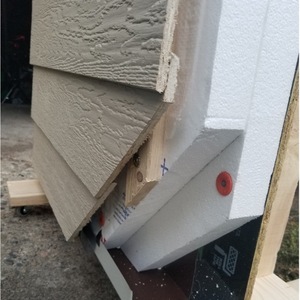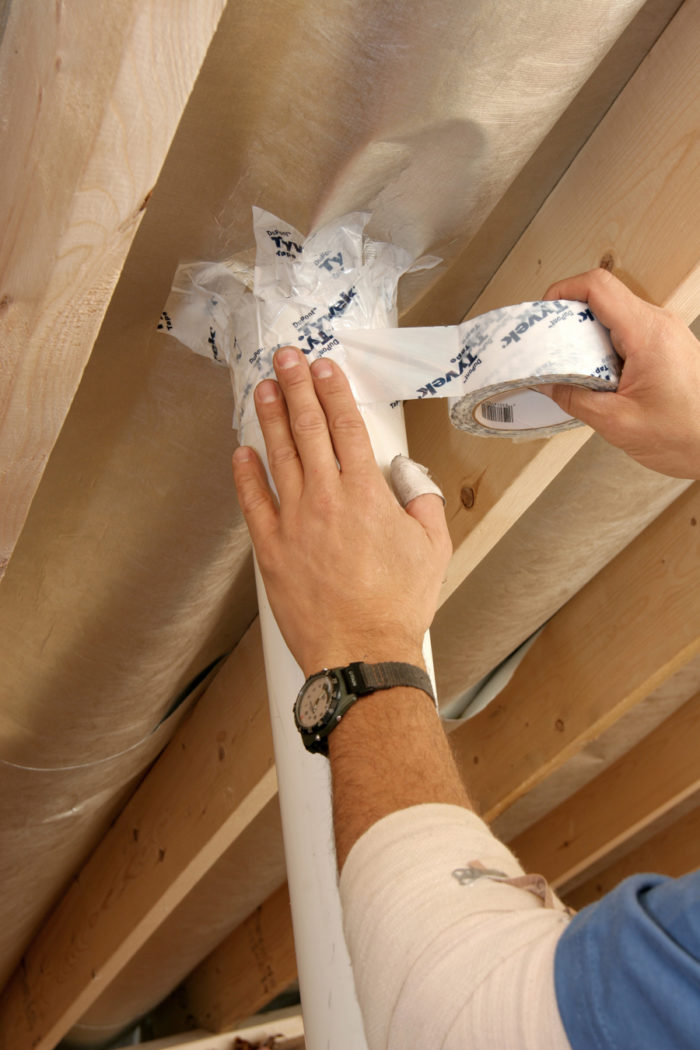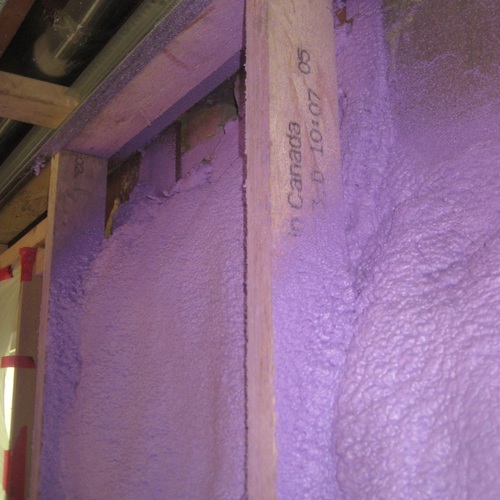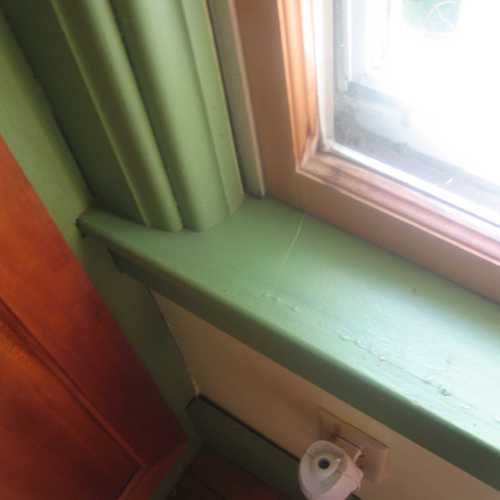
In my previous post on older homes, I explained the importance of controlling bulk water and vapor before tackling energy-performance upgrades. In this post, I’ll talk about air leaks. Air movement can affect both the wetting and drying potential of a material; air moving in and out of a building also influences energy usage and can impact indoor air quality (IAQ).
Air-sealing is a big deal in the building science community. Codes now require blower-door testing in new construction with air-sealing mandates at 3 or 5 air changes per hour at a test pressure of 50 Pascals, depending on location. Blower-door testing of older homes is done for different reasons. I test them as part of an energy audit, and I recommend testing if any changes to the building shell are planned. Something I learned the hard way: Replacing a few windows can change a building’s airtightness, which can affect other conditions in the building. Using a blower door to find and seal air leaks is critical if the goal is to decrease energy usage and increase comfort. The locations of holes and the natural ventilation rate will be unique to each home.
Start in the attic
In a cold climate like mine, I start by looking for air leaks in the attic. Vented, unconditioned attics are common in my market, and air-sealing wasn’t a consideration when these older homes were being built. Usually, sealing the attic presents the best envelope performance–improvement opportunities. (It should always be done before additional insulation is installed. It may even be necessary to remove existing insulation to expose potential problem areas.)
There are a few different strategies for air-sealing an attic. Generally, the approach depends on how the attic is constructed. There are several good articles on GBA covering this topic. Rather than…
Weekly Newsletter
Get building science and energy efficiency advice, plus special offers, in your inbox.

This article is only available to GBA Prime Members
Sign up for a free trial and get instant access to this article as well as GBA’s complete library of premium articles and construction details.
Start Free TrialAlready a member? Log in















9 Comments
Randy,
Great article. Thank you. What I struggle with in our 1915 bungalow in zone five is the penetrations as above. The picture there with the liquid flashing is Of a new build, Not an old house. So the question is how to carefully detail new penetrations in an old house. For example, I have vinyl siding over some sort of foil membrane over cedar shakes. Walls filled with cellulose. Where would the liquid flashing go in that circumstance? I’ve used liquid flashing from the inside to help with the airsealing but obviously get concerned about water management as well.
"How to Detail New Penetrations in an Old House" sounds to me like Randy's next assignment.
Yes, Kiley! Thanks! And while I have you, I would love a detailed “how to” retrofit an ERV in an old house either here and/or on the FHB podcast.
I will add it to my list, Will. Thank you for the topic ideas; they are both excellent. My aim is to incorporate more how-to type articles that relate to existing homes.
Hey Will,
Often in new homes, the water and air control layers are either the same material or in direct contact with each other. This simplifies sealing a hole, much like the photo of the Zip sheathing in the article. In an older home, take yours for example, it sounds like the foil membrane is probably acting as the WRB, this is the spot to seal for water. This is easier said than done, gaining access to the WRB product after siding is installed can be difficult and is the reason the siding often gets the water sealing. The air sealing should be done at the air control material, whether that is drywall, polyethylene sheeting or some other product. Kiley is right, this would make a good article.
Thanks Randy. Yes, as you said it’s hard to determine which layer to seal. The foil layer is old and loose, unlike modern WRBs and sits under the vinyl siding. Most holes as you said have just been silicones caulked to the vinyl with hole. The question is, do I cut the siding, seal to the foil if still intact, and then cobble the siding around the penetration? If foil not intact, seal to cedar siding.? The rim joist foam block and drywall are the air barriers in my house since there’s no real house wrap. Don’t need to answer all of these questions but would be great to see a future article.
It’s great to see a mix of new and old home “how tos.”
Attic air leakage in cold climate homes is what keeps weatherization experts up at night. Heat loss at the rafter heel area links directly to ice dam formation. 2x4 and 2x6 rafters do not allow for much insulation at this point with maybe a birdsmouth cut thrown in. The rafter heel area is difficult to radically improve thermally but a ventilation channel can be maintained/formed and SPF foam can block air leakage and raise the R-value.
I talked to a fellow builder a few years ago at my continuing ed class and he had recently improved a 1960's rambler in Golden Valley. They had lived there for a while and the house was not comfortable in the winter. The main focus of his weatherization was the attic. The existing insulation was taken out, ventilation channels between the rafters put in place and a couple inches of SPF was sprayed on top of the ceiling. To this an adequate layer of blown insulation was added. He said after doing this the increased comfort level in winter was extraordinary. Seal those attic bypasses first, minimize the stack effect.
Hi Doug,
That's a great example of how to air seal an attic space, which, by the way is very unfun work. Some of my most miserable memories working weatherization is squeezing into the very tight space at the eave end of a vented attic trying to add ventilation chutes.
I did a lot of work at my neighbor's house a few years ago to end the ice dams that have been with that house for nearly 40 years. I put all of my air sealing and superinsulation skills to work and the home has no more ice dams. I found myself in a very tight spot over the lowered kitchen ceiling and this is when you question your choice of professions. It all worked out with some diagnostic testing and meticulous attention to detail. Some roofs are prone to ice formation and it may not be due to heat loss. The solar orientation may warm the sunny side of the roof, raising the attic temperature to the point where the snow on the dark side melts and refreezes near the overhang.
Log in or become a member to post a comment.
Sign up Log in